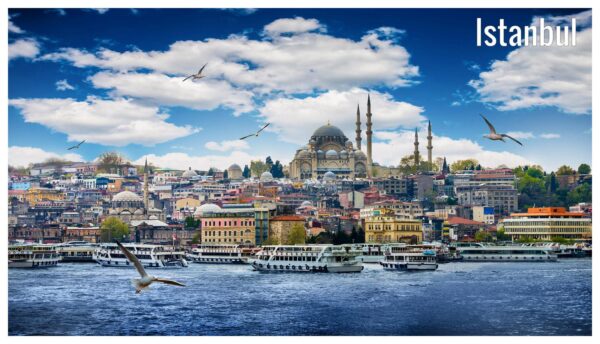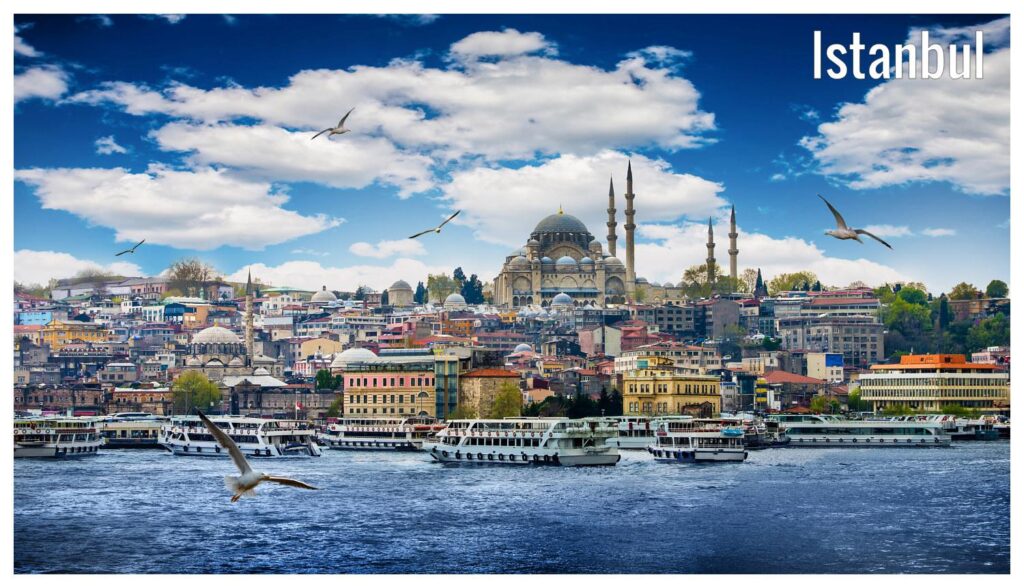The Founding of Constantinople – When Istanbul Became the Capital of the Roman Empire (330 AD)
In 330 AD, grand ceremonies marked the moment when Istanbul became the capital of the Roman Empire. From Byzantion to Constantinople, discover how this transformation shaped world history and laid the foundation for a city that would rule empires for centuries.
🏛️ 330 AD – The Birth of a New Capital
In the year 330 AD, a monumental event forever changed the course of history. The Roman Emperor Constantine the Great officially declared Istanbul the capital of the Roman Empire with magnificent celebrations and ceremonies.
Constantine’s vision was strategic — he wanted a new center of power that would connect the eastern and western regions of the vast empire. This new city was to be known as both the Second Rome and the New Rome, though it would soon gain a name that echoed through centuries: Constantinople.
At the time, the location was home to a small but prosperous Greek colony called Byzantion (Byzantium). Situated between Europe and Asia, bordered by the Sea of Marmara, the Golden Horn, and the Bosphorus Strait, Byzantion possessed one of the most advantageous geographic positions in the ancient world — a perfect place for an imperial capital.
🌍 From Byzantion to Constantinople
The origins of Istanbul date back to the 7th century BC, when settlers from Megara in Greece established a colony here under the leadership of Byzas. They named the settlement Byzantion after their leader. For centuries, Byzantion thrived as a vital trade hub between the East and West, controlled at various times by Persians, Athenians, and Spartans.
When Constantine became the sole ruler of the Roman Empire in 324 AD, he realized that Rome was no longer an ideal administrative center. It was distant from the empire’s eastern frontiers and vulnerable to invasions.
He saw in Byzantion a perfect opportunity — a city blessed by nature, surrounded by seas, easily defensible, and rich in trade routes. Thus, in 326 AD, he began rebuilding Byzantion as a grand imperial capital modeled after Rome itself.
After four years of intense construction, the new city was officially inaugurated on May 11, 330 AD, with splendid festivals, games, and religious ceremonies. From that day onward, Constantinople became the heart of the Roman Empire.
🕍 The Era of the Second Rome
Constantinople quickly rose to prominence as not only the political center but also the cultural and religious heart of the empire. It became known as the Second Rome or New Rome, symbolizing continuity with the ancient capital while marking the beginning of a new era.
Emperor Constantine filled his new capital with magnificent buildings — a Senate House, a Hippodrome, imperial palaces, and Christian churches. He envisioned a city that mirrored Rome’s grandeur but reflected the rising influence of Christianity, a faith he personally supported.
Thus, Constantinople became a symbol of unity between Roman traditions and Christian values. This fusion of old and new ideals shaped not only the Byzantine Empire but also the course of European civilization for over a millennium.
🏰 The Byzantine Golden Age
When the Roman Empire was officially divided in 395 AD, Constantinople became the capital of the Eastern Roman Empire, later known as the Byzantine Empire. This marked the beginning of what historians call the Byzantine era of Istanbul.
During this time, the city reached its peak of splendor and influence. Surrounded by the mighty Theodosian Walls, Constantinople became virtually impregnable for centuries.
The city boasted some of the most impressive architectural and cultural achievements in history, including the Hagia Sophia, the Great Palace, the Hippodrome, and the Church of the Holy Apostles.
Under Emperor Justinian I in the 6th century, Constantinople experienced its Golden Age. The construction of Hagia Sophia, completed in 537 AD, became a masterpiece of Byzantine art and architecture — and a lasting symbol of Istanbul’s role as the capital of the Roman Empire in the East.
⚓ The Center of Trade, Culture, and Diplomacy
Located at the crossroads of continents, Constantinople became one of the most important commercial hubs in the ancient world. It connected Europe, Asia, and Africa, serving as the western endpoint of the Silk Road.
Spices, silk, gems, and grains flowed through its bustling harbors. Merchants, scholars, and travelers from all corners of the world passed through its gates, making the city a melting pot of cultures, languages, and religions.
This thriving exchange made Constantinople not just a political capital, but also the beating heart of medieval civilization.
🔱 From Constantinople to Istanbul
In 1453, after more than 1,100 years as the capital of the Byzantine Empire, Constantinople was conquered by Sultan Mehmed II (Mehmed the Conqueror) of the Ottoman Empire. The conquest marked the end of the Byzantine era and the beginning of a new chapter — the city was renamed Istanbul.
With the Ottoman conquest, Istanbul inherited and preserved the legacy of Rome and Byzantium, becoming once again the capital of a vast and powerful empire.
Thus, the tradition that began in 330 AD with Istanbul becoming the capital of the Roman Empire continued for centuries under new rulers, cementing its reputation as one of the world’s most enduring capitals.
🧭 Historical and Cultural Legacy
The decision to make Istanbul the capital of the Roman Empire was more than a political act — it reshaped global history. It gave birth to a new civilization that blended Roman governance, Greek culture, and Christian faith into what became known as Byzantine heritage.
Even today, structures like Hagia Sophia, the City Walls, Basilica Cistern, and Hippodrome remain as living monuments of that glorious past.
Each stone tells the story of Byzantion’s transformation into Constantinople and, ultimately, Istanbul — a city where East meets West and past meets present.
🕊️ Conclusion – The Eternal City
When Constantine the Great declared Istanbul the capital of the Roman Empire in 330 AD, he could not have foreseen that his creation would stand as a world capital for nearly 1,700 years.
Istanbul, the New Rome, became a symbol of continuity, faith, and cultural fusion — a city that shaped empires, religions, and humanity itself.
From Byzantion to Constantinople, from Constantinople to Istanbul, the legacy of this transformation continues to inspire.
It is not only the story of a city but the story of civilization itself — the eternal bridge between East and West, ancient and modern, empire and eternity.


